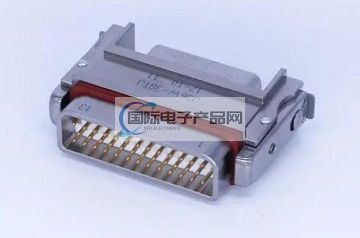Categorization:Product Information
Connector design is a complex and critical engineering task that requires consideration of several factors, including functional requirements, electrical characteristics, mechanical structure, and manufacturing process. When designing a connector, there are a number of standards and specifications that are usually followed to ensure connector performance and interoperability. The following are some common connector design standards: 1. ISO standards: The International Organization for Standardization (ISO) has issued a series of standards related to connector design, such as ISO 8092 (automotive connectors), ISO 11452 (RF connectors), ISO 15170 (fiber optic connectors) and so on. These standards specify the connector size, electrical characteristics, material requirements, etc. 2. IEC standards: The International Electrotechnical Commission (IEC) has developed a number of connector-related standards, such as IEC 61076 (industrial connectors), IEC 60512 (electrical measurements of connectors and sockets), IEC 61754 (fiber-optic connectors) and so on. These standards cover the connector design, performance testing and specification requirements. 3. ANSI standards: American Standards Institute (ANSI) issued a series of connector standards, such as ANSI/TIA-568 (communication connectors), ANSI C119 (power connectors) and so on. These standards are usually applicable to specific areas of connector design and application.4. MIL Standard: Military Standard (MIL-STD) is used for military applications of connector design standards, such as MIL-DTL-38999 (ring connector), MIL-DTL-5015 (rectangular connector). These standards require connectors with high reliability and durability under harsh environmental conditions. The process of connector design usually includes the following key steps: 1. Determine the requirements and specifications: first of all, to clarify the functional requirements of the connector, including electrical characteristics, mechanical structure, environmental conditions. At the same time, refer to the applicable standards and specifications to understand the relevant requirements of the designed connector.2. Electrical design: According to the electrical characteristics of the connector needs, design pin layout, electrical parameters (such as current, voltage, impedance, etc.) and signal transmission characteristics. This includes determining the location of the pin, the number of pins, circuit connection, etc. 3. Mechanical design: according to the mechanical structure of the connector needs, design shape, material selection, connection, insertion and extraction force, etc.. This includes determining the connector size, shape, socket structure, sealing methods, etc. 4. Manufacturing process design: taking into account the feasibility and cost-effectiveness of connector manufacturing, design of suitable manufacturing processes, including mold design, injection molding process, metal processing, printed circuit board manufacturing, etc. 5. Simulation and verification: through computer-aided design (CAD) software for electromagnetic simulation, thermal simulation, mechanical simulation and other analysis to assess the performance and reliability of the connector. In addition, laboratory testing and sample verification to verify that the design meets the requirements.6. Documentation and specification preparation: Preparation of detailed specifications of the connector, including connector dimensional drawings, pin assignment table, electrical parameters, material specifications, manufacturing process requirements. These documents are crucial for production and quality control.7. Production and quality control: According to the connector design and specifications, mass production of connectors is carried out. At the same time, the establishment of appropriate quality control processes to ensure the consistency and reliability of the connector. Connector design requires comprehensive consideration of the requirements of a number of aspects, including electrical, mechanical, manufacturing and reliability. Reasonable design process and compliance with relevant standards can ensure that the connector has good performance and reliability to meet the needs of specific applications.

-About International Electronic Products Network platform related to the introduction and sales of products brief: International Electronic Products Network - a professional agent / production / sales of a variety of {connectors | wiring harness | wire and cable products}; if you have a related [connectors | wiring harness | wire and cable products] procurement / purchasing needs or want to buy / to understand which connectors | wiring harness | wire and cable products we can provide solutions, please contact the following Division I business personnel; if you have a related [connectors | wiring harness | wire and cable products] sales / resources and promotion needs, please click "→ Business Cooperation ←" with the person to discuss! If you have related [connectors | wire harness | wire and cable products] sales / resources and promotion needs, please click on the "¡¡ Business Cooperation ←" to discuss with a person!